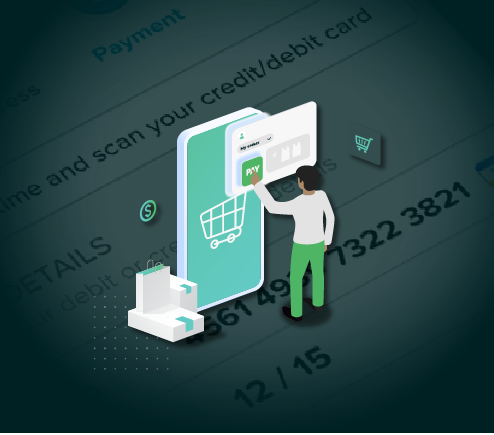Introduction: What is Embedded Finance?
Embedded finance refers to the integration of financial services into non-financial platforms, apps, or marketplaces. Instead of relying solely on banks or fintech apps, users can now make payments, access loans, or purchase insurance directly within everyday apps—like e-commerce platforms, ride-hailing apps, or social media.
This trend is reshaping the financial ecosystem by blurring the lines between technology and finance. Companies that were traditionally non-financial can now offer financial services, creating more seamless user experiences while unlocking new revenue streams.
The rise of embedded finance is powered by APIs, digital wallets, instant lending protocols, and regulatory frameworks that allow integration with traditional banking infrastructure. The question is not if it will dominate, but how fast.
The Core Components of Embedded Finance
Embedded finance is not a single product—it’s a combination of several services integrated into third-party platforms.
🔸 1. Embedded Payments
Embedded payments allow users to complete transactions without leaving an app or website. Examples include:
- In-app checkout for e-commerce platforms.
- Digital wallets integrated into ride-hailing or food delivery apps.
- One-click payments for subscription services.
This seamless experience improves conversion rates, reduces friction, and enhances customer loyalty. By integrating payments into existing user flows, companies can retain users within their ecosystem while offering bank-grade financial services.
🔸 2. Embedded Lending and Buy Now, Pay Later (BNPL)
Embedded lending enables instant credit approval during purchases. BNPL has become especially popular in e-commerce, allowing consumers to split payments into installments. Key benefits include:
- Instant access to credit without navigating multiple platforms.
- Higher purchase volumes, as consumers feel empowered to buy bigger-ticket items.
- Data-driven credit assessment, using transaction history and app behavior instead of traditional credit scores.
Embedded lending democratizes access to credit, providing opportunities for younger users or those with limited banking history.
🔸 3. Embedded Insurance and Wealth Management
Insurance products like travel or device insurance can now be offered at the point of sale. Similarly, investment tools can be integrated into e-commerce or social media apps:
- Device insurance offered at checkout on electronics websites.
- Micro-investing options embedded in payment apps.
- Personalized investment recommendations based on spending patterns.
These services enhance user trust and engagement while making finance a natural part of everyday activities.
Benefits of Embedded Finance for Users and Businesses
Embedded finance is beneficial for both end-users and companies, driving adoption across industries.
🔸 1. Convenience and Seamless Experience
Users no longer need multiple apps or platforms to access financial services:
- Payments, lending, and insurance are integrated into familiar workflows.
- One-stop solutions reduce friction and save time.
- Consumers enjoy a more intuitive, cohesive experience, which increases retention.
🔸 2. Financial Inclusion and Access
Embedded finance can reach underserved populations who may lack traditional banking access:
- Ride-hailing or e-commerce apps can extend BNPL or micro-loans to new users.
- Mobile-first solutions cater to users in emerging markets without traditional bank infrastructure.
- AI-driven credit assessments allow fairer access to credit, even for those without a long credit history.
This fosters economic empowerment and expands market reach for companies.
🔸 3. Increased Revenue for Non-Financial Companies
For non-financial platforms, embedding finance opens new revenue streams:
- Transaction fees from payments or lending.
- Commissions from insurance or investment products.
- Higher customer engagement and retention, driving lifetime value.
This strategy allows companies to monetize user interactions without adding friction.
Challenges and Considerations in Embedded Finance
Despite its promise, embedded finance faces several challenges:
🔸 1. Regulatory Compliance
Integrating financial services requires compliance with banking, lending, and insurance regulations:
- Companies must navigate complex AML/KYC and data privacy requirements.
- Cross-border embedded finance adds layers of legal complexity.
- Regulatory oversight is evolving, creating uncertainty for new entrants.
🔸 2. Security and Data Privacy
Embedding finance increases exposure to sensitive financial data:
- Apps must implement robust encryption and security protocols.
- Consumers must trust that their financial information is safe.
- Data breaches can lead to loss of trust and regulatory penalties.
🔸 3. Consumer Education and Trust
Users may hesitate to adopt financial services within non-financial apps:
- They may fear hidden fees, fraud, or misuse of data.
- Transparent disclosure and clear communication are essential.
- Human-centered design and AI-driven explanations can help build trust and confidence.
The Future of Embedded Finance
Embedded finance is poised to become the standard way users interact with money:
- AI and machine learning will further personalize lending, payments, and investment recommendations.
- Ecosystems will expand, with partnerships between fintechs, banks, and tech platforms.
- Consumers will increasingly expect finance to be embedded and frictionless in all digital experiences.
- New business models, like subscription-based financial services and integrated loyalty programs, will emerge.
The convergence of technology and finance through embedded solutions promises smarter, faster, and more inclusive financial services for everyone.
Conclusion: Making Finance Seamless and Accessible
Embedded finance is not just a trend—it’s a paradigm shift in how people interact with financial services. By integrating payments, lending, insurance, and investment tools into everyday apps, companies can provide convenience, financial inclusion, and new revenue opportunities.
The winners in this new ecosystem will be those who:
- Offer seamless, secure, and transparent services.
- Use AI to personalize experiences while respecting privacy.
- Educate users and build trust in digital financial products.
As embedded finance continues to evolve, it will reshape the financial landscape, turning everyday apps into hubs of instant, intelligent, and human-centered financial experiences.




